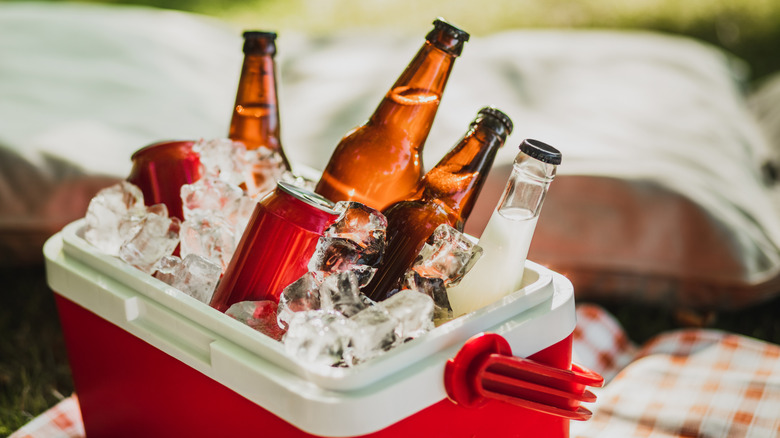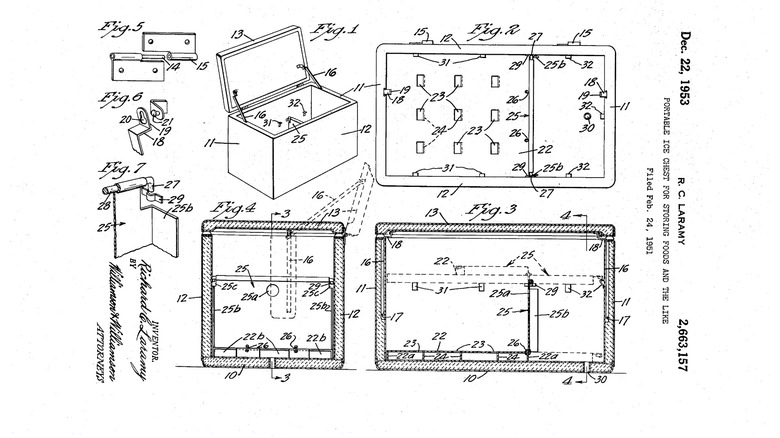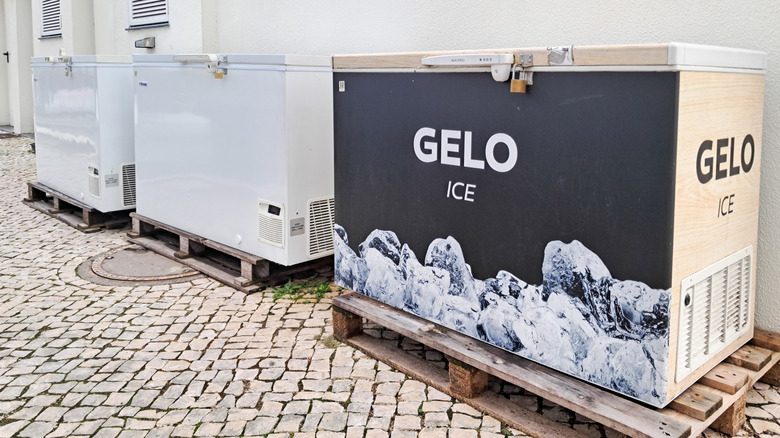
Consider, if you will, the humble cooler, stalwart guardian of summertime snacks and beverages. Coolers are vital for all kinds of hot weather activities like beach visits and camping, helping to keep perishables lasting longer in the sweltering sun. By today's standards, a regular cooler seems positively mundane, nothing but a little box for keeping snacks cool. Even a smart cooler with onboard electrical systems is still just a cold box. However, it's important to remember that, mundane as it may
be, this kind of cold storage has been around for less than a hundred years.
The original refrigerated storage systems were developed throughout the early 1800s, and for a good while, that was the only way to reliably keep food preserved via cold. If you wanted to take anything on the go with you, all you could really do was cram a wooden chest full of ice chips and cross your fingers. In the mid-1900s, a certain inventor came up with a much better means of mobile cold storage, one that made efficient use of ice and kept snacks properly protected. That means it was the first portable cooler, a development that would change the face of picnicking forever.
Read more: Major Air Purifier Brands Ranked Worst To Best (According To Consumer Reports)
The Portable Cooler Was Invented By Richard C. Laramy

The very first means of continuous, semi-mobile cooling was invented in 1802 by a Maryland farmer named Thomas Moore, who invented a special insulated tub for transporting fresh butter to the market. This device, the "refrigiratory," consisted of a tin chamber surrounded by a lidded cedar tub and covered in rabbit fur and cloth. Ice was placed between the tin chamber and the tub, which kept the butter cool.
That was pretty much it for the next hundred years or so, with the only noteworthy developments being Coca-Cola's drink cooler and the water cooler bucket from another big name in cooling, Igloo. The first true portable cooler came about circa 1951, when an inventor named Richard C. Laramy filed for a United States patent for his "Portable ice chest for storing and refrigerating foods and the like." This patent, which was approved in 1953, featured blueprints for a small, lidded container with an isolated bottom compartment for storing ice. The blueprints don't specify what, exactly, this prototypical cooler was made of, but after his patent was approved, the company Laramy worked for, Queen Stove Works, began manufacturing Kampkolds from aluminum.
In 1954, Queen Stove Works was acquired by Coleman, who began marketing the Kampkolds as "coolers." A few years later in 1957, the original metal design was swapped out for plastic, which finally brings us to the coolers we know today.
Coolers Use Insulating Materials, Ice Chests Are Just Full Of Ice

Today, the terms cooler and ice chest are generally used interchangeably to refer to a small, insulated container where you keep your snacks cool. Technically, though, an ice chest is not the same thing as a cooler, with the primary difference being size.
A cooler is smaller and lighter, usually with assistive features like handles or wheels to make it easier to transport. Coolers are made with insulated materials, usually multiple layers of metal and/or plastic, which helps to protect the cooled contents from hot environments. That's part of why Yeti coolers are so expensive; they use high durability, insulated materials like polyurethane foam.
An ice chest works on the same basic principle, except on a much larger scale. Ice chests, also known as chest coolers, have thicker, longer bodies for holding more snacks, drinks, and other assorted perishables. While an ice chest could also have assistive features like handles or wheels, they're generally intended more to just stay in one place and have everyone come to them.
Incidentally, coolers and ice chests are completely different from ice boxes, which were the primary means of home cooling before powered refrigerators. Ice boxes utilized multiple insulated compartments, one of which stored large quantities of ice, to cool and preserve food via evaporation.
Want the latest in tech and auto trends? Subscribe to our free newsletter for the latest headlines, expert guides, and how-to tips, one email at a time.
Read the original article on SlashGear.












